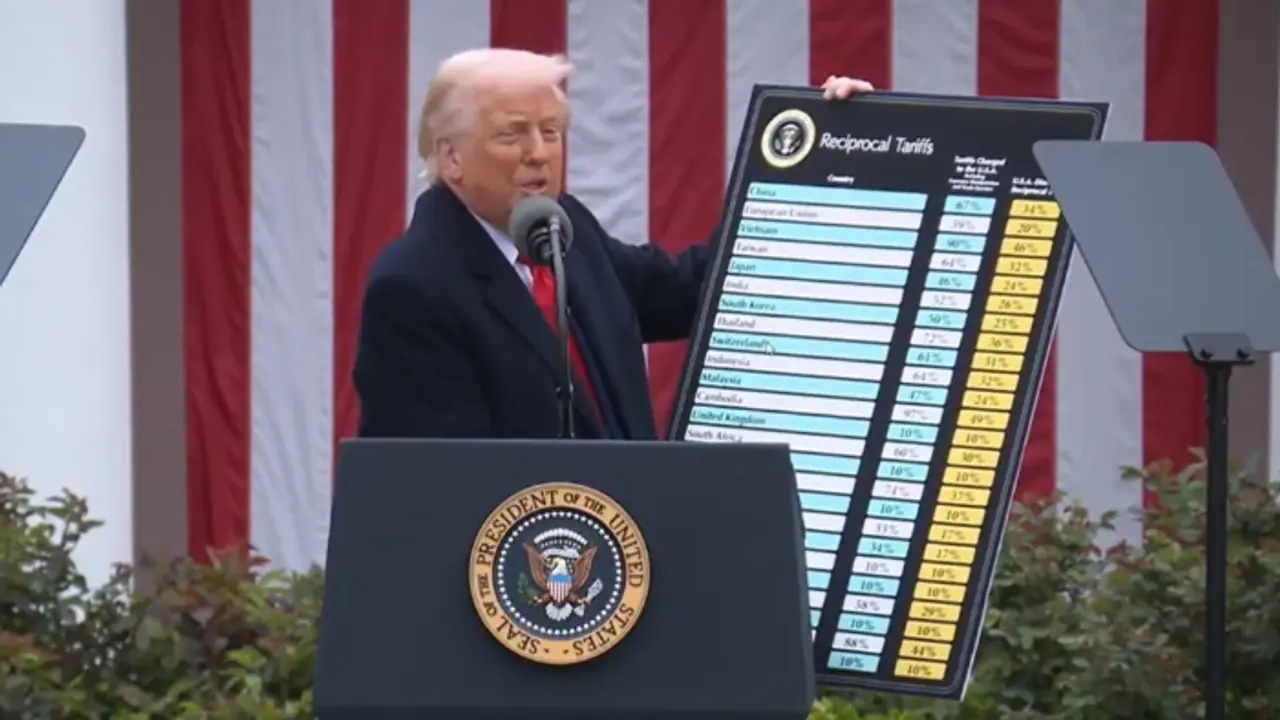US President Donald Trump said he would impose a 10% baseline tariff on all imports to the United States and higher duties on some of the country's biggest trading partners, drawing defiant responses from leaders and governments around the world.
The United States has imposed a steep 27% reciprocal tariff on Indian goods entering its market. While industry insiders acknowledge the challenges this move presents, experts believe India’s position remains relatively stronger compared to other competitor nations facing even harsher tariffs.

What exactly are tariffs?
Tariffs are customs duties or import taxes imposed on goods entering a country. Typically, the burden of these taxes gets passed on to consumers, making imported products more expensive.
What are reciprocal tariffs?
Reciprocal tariffs function as a countermeasure—countries impose them in response to high duties or tariff hikes by their trade partners, effectively mirroring restrictive trade practices.
How much tariff has US imposed on India?
Indian exports were already subject to a 25% tariff on steel, aluminum, and automobiles. Now, from April 5-8, all remaining Indian goods will face a 10% base tariff, which will then surge to a country-specific 27% from April 9 onward. Over 60 nations have been impacted by this sweeping policy.
Why is the US taking this step?
Washington justifies these tariffs as part of its strategy to boost domestic manufacturing and reduce its trade deficit. The US has long grappled with an enormous trade imbalance, particularly with China. In the case of India, America recorded a $35.31 billion trade deficit in goods in 2023-24.
Which sectors are exempt from these tariffs?
Certain essential and strategic sectors have been spared, including pharmaceuticals, semiconductors, copper, and key energy commodities such as oil, gas, coal, and LNG, as noted by the think tank GTRI.
How will this impact India?
According to government sources, the Commerce Ministry is actively analyzing the impact of these increased tariffs. However, officials stress that while the move presents obstacles, it does not amount to a major setback for India.
The Federation of Indian Export Organizations (FIEO) acknowledged the challenges but emphasized that India's position remains more competitive compared to other affected nations.
Moreover, exporters argue that the proposed Bilateral Trade Agreement between India and the US will play a crucial role in mitigating the impact of these tariffs.
GTRI believes that America’s protectionist policies could actually create opportunities for India within the shifting global supply chain. However, for India to capitalize on these shifts, the country must improve its ease of doing business, strengthen logistics and infrastructure, and maintain policy stability.
What’s the status of India-US trade agreement?
During Prime Minister Narendra Modi’s visit to Washington in February, both nations agreed to negotiate a bilateral trade pact aimed at boosting trade volumes to $500 billion by 2030. The first phase of the agreement is expected to be finalized between September and October 2024.
What is a trade agreement?
A trade agreement is a pact where two countries either reduce or eliminate tariffs on a wide range of goods and services, easing restrictions to facilitate smoother trade and investments.
India’s tariffs compared to those on other countries?
While India faces a 27% tariff, other nations have been hit even harder:
China: 54%
Vietnam: 46%
Bangladesh: 37%
Thailand: 36%
Are these tariffs WTO-compliant?
Trade law expert Abhijit Das argues that these tariffs violate WTO (World Trade Organization) rules as they breach both Most Favored Nation (MFN) obligations and the agreed-upon bound rate commitments. He asserts that affected countries have the right to challenge these tariffs through the WTO’s dispute resolution mechanism.
How deep is India’s trade ties with the US?
The US has been India’s largest trading partner from 2021-22 to 2023-24. Currently, the US accounts for 18% of India’s total exports, 6.22% of imports, and 10.73% of bilateral trade.
In 2023-24, India enjoyed a $35.32 billion trade surplus with the US, up from $27.7 billion in 2022-23 and $32.85 billion in 2021-22.
Key exports from India to US in 2024:
Pharmaceuticals & Biologicals: $8.1 billion
Telecom Equipment: $6.5 billion
Precious & Semi-Precious Stones: $5.3 billion
Petroleum Products: $4.1 billion
Gold & Jewelry: $3.2 billion
Cotton Apparel: $2.8 billion
Iron & Steel Products: $2.7 billion
Major imports from the US to India in 2024:
Crude Oil: $4.5 billion
Petroleum Products: $3.6 billion
Coal & Coke: $3.4 billion
Cut & Polished Diamonds: $2.6 billion
Electric Machinery: $1.4 billion
Aircraft & Spacecraft Parts: $1.3 billion
Gold: $1.3 billion
What lies ahead?
With the US tightening its trade policies, India stands at a crossroads. While the increased tariffs pose immediate hurdles, they also present an opportunity for India to strengthen its trade position globally. The India-US bilateral trade agreement will be crucial in determining how both economies navigate these turbulent waters.
Also read: Tariff titans: India and the US face off in a high stakes trade dance | Opinion
